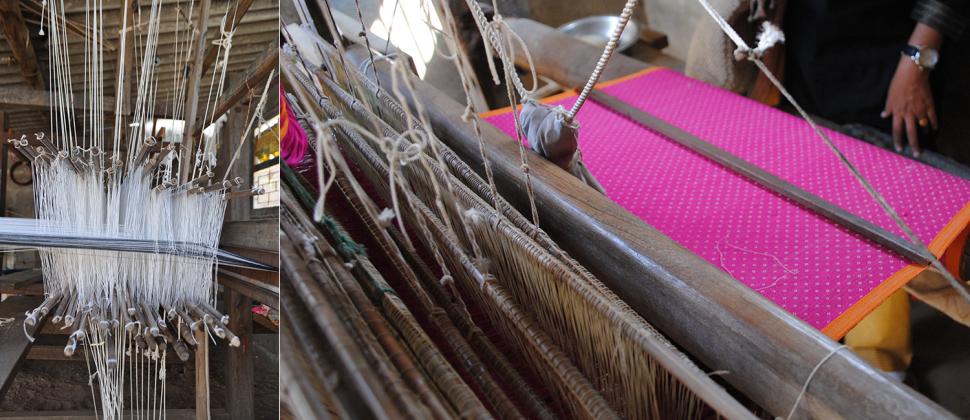Crafting Mashroo
The Mashroo textile was woven for Muslim communities, who believed that silk should not touch a person’s skin. Crafting a solution that enabled people to honor this belief while still appearing dressed in the finest clothing, weavers mixed silk and cotton threads to create a textile that was simple cotton on one side and rich silk on the other. The meaning of Mashroo is “this is allowed.” The port town of Mandvi is at the center of Mashroo legacy in Kachchh, historically creating luxurious bolts of the fabric that Muslims and Hindus enjoyed. In the regions of Saurashtra and Kachchh , women stitch mashroo kanjari (backless blouses), skirts, and cholis. Mashroo helped weave communities together. The Ahir Patels (farmers) produced cotton, which was handspun and then given the the weavers. Rabari and Ahir women did embroidery and mirror work to create even more distinctive versions of mashroo.
Mashroo was a royal craft, produced in large quantities until the 1900’s for local elite and export markets. Till recently, the Maheshwari weavers practiced the craft.
Today’s Threads
Today, traditional mashroo weaving is on the brink of extinction.The clothing styles of the Kachchhi people have changed, severing the original community linkages. Mashroo cloth can be made by power looms today, which people prefer to the more costly handmade mashroos. With a declining export market, mashroo weavers are using cotton staple instead of silk to meet the price needs of the domestic market. The original mashroo of cotton and silk, with its lush texture, is not produced anymore because the market is no longer discerning and demanding for it.

Mashru loom
Preserving a Future
When Khamir was founded, most mashroo weavers were only aligned with a single trader. Khamir created an alternate space that supported weavers on the verge of giving up the craft. As an immediate measure, Khamir created a raw-material depot. We encouraged the artisans to work regularly by purchasing their entire annual stock. With a full stock of mashroo, Khamir explored new markets through exhibitions, designers and sari suppliers. In time, weavers increased the palette of colors and incorporated new designs which included fusing other crafts like leather. At present there are 15-20 mashroo weavers, and the number of weavers aligned with Khamir is steadily increasing, while recognition of the mashroo textile is on the upswing.